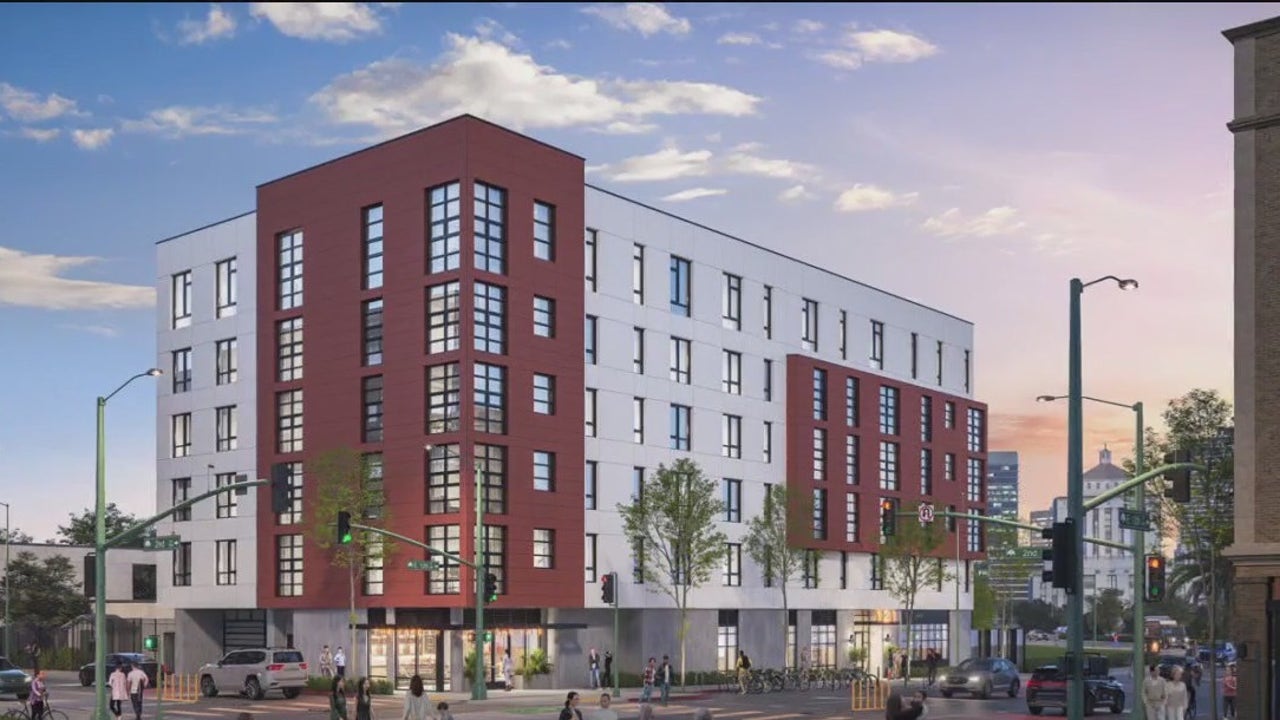Crews break ground on new affordable housing development near Lake Merritt
Crews break ground on new affordable housing development near Lake Merritt KTVU FOX 2 San Francisco


New Affordable Housing Development Coming to Lake Merritt

Introduction
Crews broke ground on a multi-story apartment building near Lake Merritt on Tuesday that is expected to bring dozens of new and affordable homes to Oakland.
Location and Project Details
The project consists of two buildings, with construction starting immediately on the first structure, which will have 91 apartment units. The project is expected to be complete by 2026.
The buildings will be located at E. 12th Street and 2nd Avenue in the Lake Merritt Eastlake neighborhoods. The sites are on the west end of Lake Merritt, near the old Kaiser Convention Center.
Sustainable Development Goals
“This area is majority renters, it’s majority people of color. It’s been highly impacted by gentrification,” said Oakland City Council President, Nikki Fortunato-Bas. “That’s going to help keep people here in Oakland and stop the kind of displacement we’ve seen here for many, many years.”
Affordable Housing and Support for Homeless Individuals
The multi-story complex will have studio, 1, 2, and 3-bedroom apartments. Twenty-three of the apartments will be designated for people transitioning from homelessness to permanent housing.
Prospective tenants must qualify for affordable housing. That means household incomes should be between 20 to 60 percent of the Area Median Income for that zip code. It breaks down to a range of $30,000 to no more than $95,000 per year in income, per household.
“People who work in retail, people who work in emergency services,” said Oakland Housing Authority Executive Director and CEO, Patricia Wells. “Our hope is some of our teachers will end up responding to the opening of our waitlist.”
Community Involvement and Application Process
“We’re really excited because you know, in the season where crime and other complex aspects of the community here at peak pitch, we also believe investing in housing first is one of the best ways to approach these challenging problems,” said Liz Probst, Director of Real Estate Development at the East Bay Asian Local Development Corporation (EBALDC), the organization spearheading construction and one of several community groups involved in developing the project. “The process for potential residents and applicants to apply for the housing involves a lottery process about six months prior to opening the doors,” she said.
Funding and Measure U
The total cost of the first, 91-unit apartment building is $102 million. The money to build it comes from state and local governments, the East Bay Asian Local Development Corporation, The Unity Council, and Jordan Real Estate Investments. Additional funding comes from Measure U, which Oakland taxpayers approved in 2022 to fund affordable housing projects.
The E. 12th Street apartment complex is the first affordable housing project in Oakland to use Measure U funds.
SDGs, Targets, and Indicators
1. Which SDGs are addressed or connected to the issues highlighted in the article?
- SDG 1: No Poverty
- SDG 11: Sustainable Cities and Communities
- SDG 17: Partnerships for the Goals
2. What specific targets under those SDGs can be identified based on the article’s content?
- SDG 1.4: By 2030, ensure that all men and women, in particular the poor and the vulnerable, have equal rights to economic resources, as well as access to basic services, ownership, and control over land and other forms of property, inheritance, natural resources, appropriate new technology, and financial services, including microfinance.
- SDG 11.1: By 2030, ensure access for all to adequate, safe and affordable housing and basic services and upgrade slums.
- SDG 17.17: Encourage and promote effective public, public-private and civil society partnerships, building on the experience and resourcing strategies of partnerships.
3. Are there any indicators mentioned or implied in the article that can be used to measure progress towards the identified targets?
- Indicator for SDG 1.4: Percentage of population living below the national poverty line.
- Indicator for SDG 11.1: Proportion of urban population living in slums, informal settlements, or inadequate housing.
- Indicator for SDG 17.17: Existence of partnerships between government, private sector, and civil society in the development of affordable housing projects.
4. Table: SDGs, Targets, and Indicators
| SDGs | Targets | Indicators |
|---|---|---|
| SDG 1: No Poverty | 1.4: By 2030, ensure that all men and women, in particular the poor and the vulnerable, have equal rights to economic resources, as well as access to basic services, ownership, and control over land and other forms of property, inheritance, natural resources, appropriate new technology, and financial services, including microfinance. | Percentage of population living below the national poverty line. |
| SDG 11: Sustainable Cities and Communities | 11.1: By 2030, ensure access for all to adequate, safe and affordable housing and basic services and upgrade slums. | Proportion of urban population living in slums, informal settlements, or inadequate housing. |
| SDG 17: Partnerships for the Goals | 17.17: Encourage and promote effective public, public-private and civil society partnerships, building on the experience and resourcing strategies of partnerships. | Existence of partnerships between government, private sector, and civil society in the development of affordable housing projects. |
Behold! This splendid article springs forth from the wellspring of knowledge, shaped by a wondrous proprietary AI technology that delved into a vast ocean of data, illuminating the path towards the Sustainable Development Goals. Remember that all rights are reserved by SDG Investors LLC, empowering us to champion progress together.
Source: ktvu.com

Join us, as fellow seekers of change, on a transformative journey at https://sdgtalks.ai/welcome, where you can become a member and actively contribute to shaping a brighter future.







